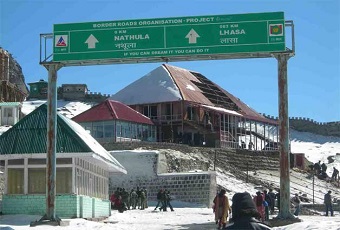What is Nathu La pass?
Nathu La pass is one of the most famous passes between India’s Sikkim and China’s Tibet, connecting India and China. The opening of the route has been possible after discussion between Chinese President Xi Jinping and Prime Minister Narendra Modi in September 2014 in India, when the former visited the country.
Nathula Pass was a major corridor of passage between India and Tibet since ancient times before it was closed in 1962 on the eve of Sino-Indo war. It was part of the famous ancient Silk route.
It is one of the trading border posts between China and India. The other one is Shipkila pass in Himachal Pradesh. While the Lipulekh (or Lipulech) in Nepal is expected to be another trading post after India and China agreed to it during Modi’s visit to China in 2015. But Lipulekh is a disputed pass between Nepal, China and India and so Nepal has concerns about the agreement between India and China over the pass.
The river Sutlej passes through Shipkila pass.
The Dalai lama fled Tibet and came to India through Nathu La pass in 1959.
Why is it important?
It opens a new route for Indian pilgrimags travelling to Mansarovar. Previously, pilgrims used to trek along a difficult path to reach Manasarovar. Now through the Nathu La Pass, they can reach their destination by bus. The other path goes through Lipulekh Pass in Uttarakhand.
China expects to attract Indian tourists by making it easier to travel to Manasarovar. India likewise expects Chinese Buddhist tourists to travel to tourist places in Sikkim and neighbouring states.
It also expands road connectivity between the two countries. This route could have dramatic impact on the trade of goods between the two countries as well.
In future, the pass could allow Indian and Chinese railway systems to meet, making it possible for people to travel on train between the countries and beyond.
This is a significant symbolic move by India and China to show the world that even though border disputes between the two countries exist, relations between them in other areas could be taken forward. This also shows the maturity and level of trust between the leadership of both countries.





